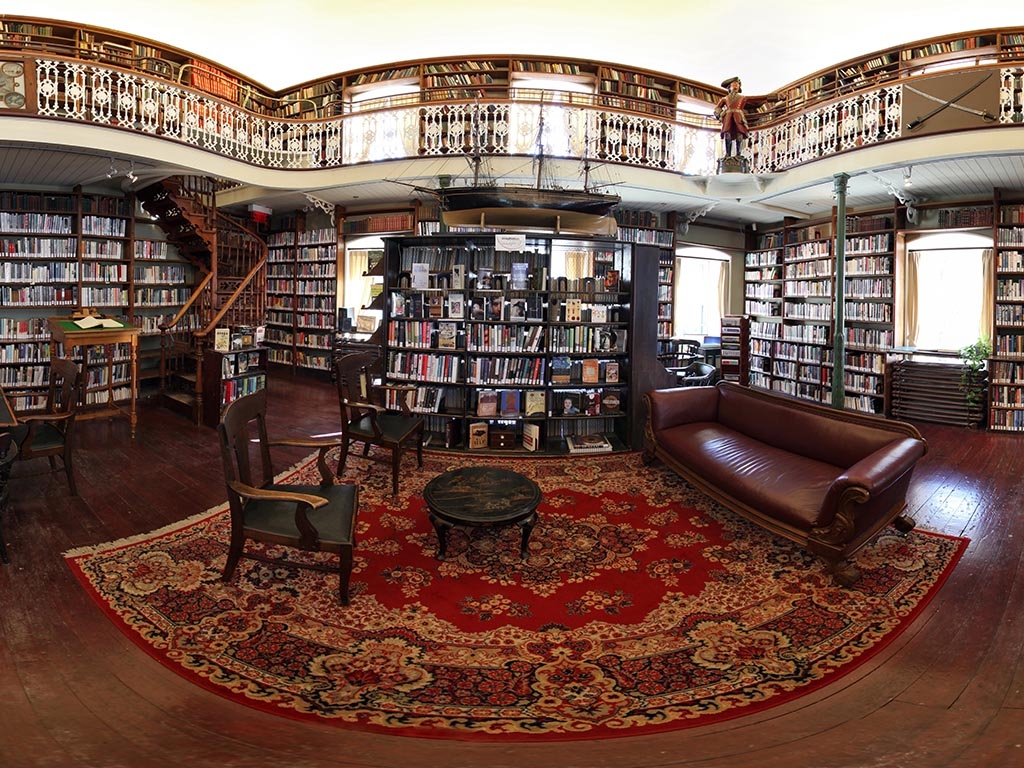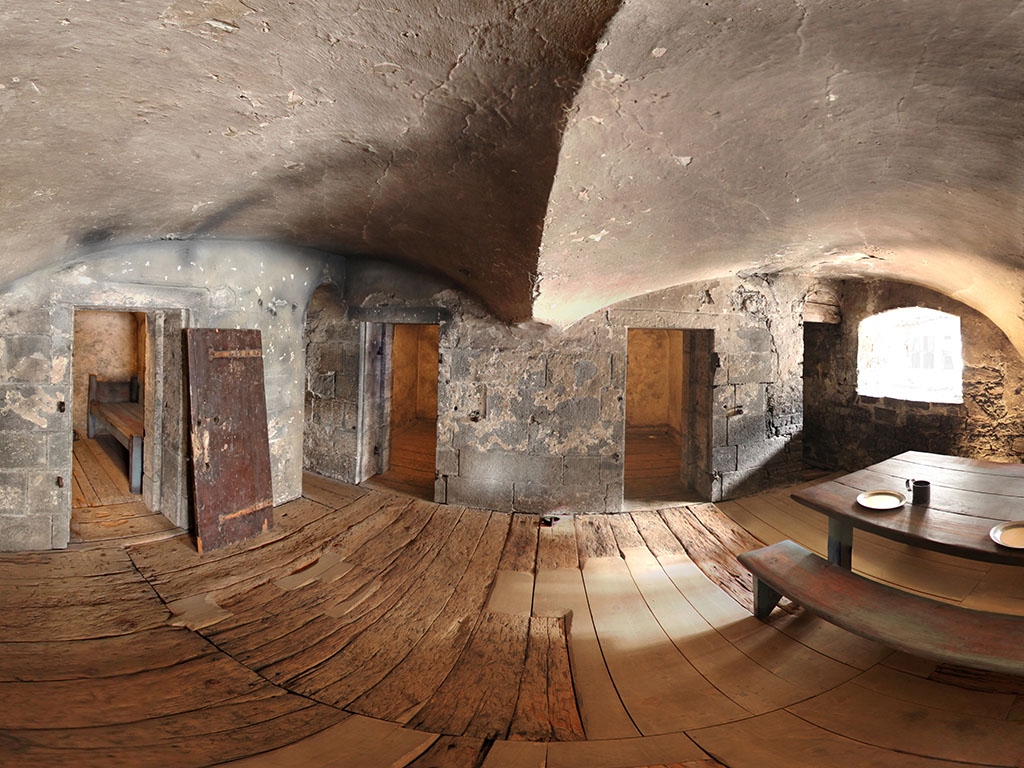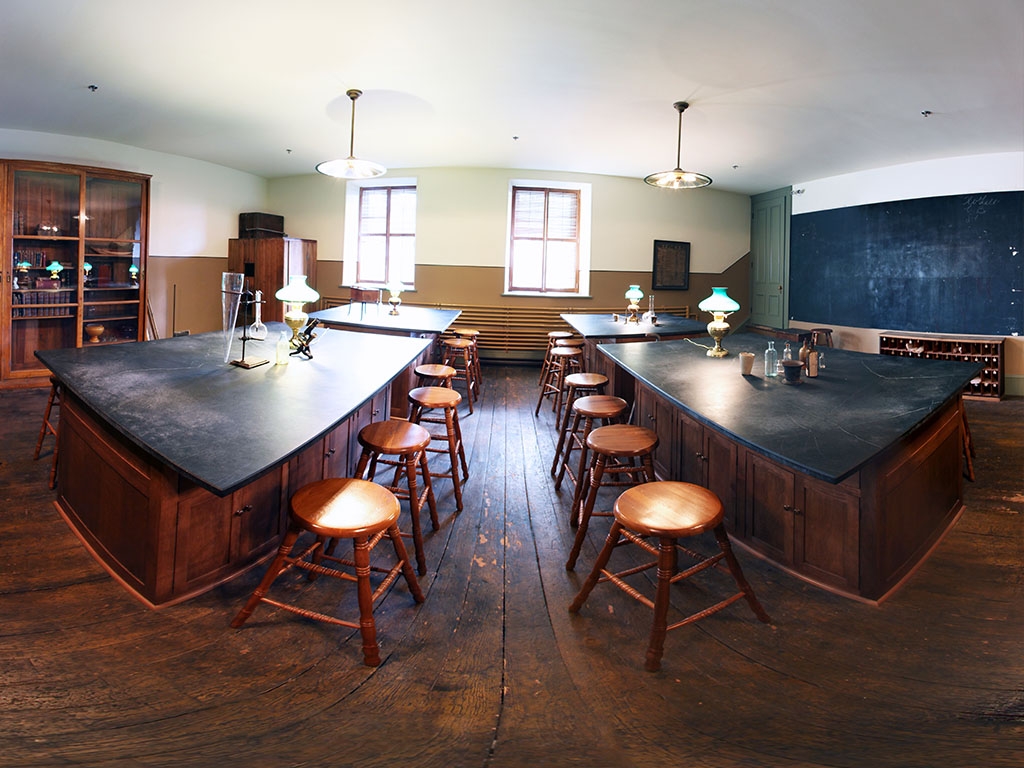Witness to the Scottish Presence in Québec
Morrin Centre is a focal point for English culture in Québec City. It occupies a building that is inextricably linked to the history of the Scottish community, which established the city’s first English-language institution of higher learning. But before the first students could walk the halls of Morrin College, the gallows and prison bars that recalled the building’s sad past had to go.
A prison in the Scottish part of town
The building you see here is home to Morrin Centre. It was built between 1808 and 1813 on the former site of the Royal Redoubt, a military facility from the French Regime. The obsolete prison that it housed was demolished to make way for one that was better adapted to new prison standards.
The new prison was built practically next door to St. Andrew’s Presbyterian Church in the Scottish part of town, St. Andrew being the patron saint of the Scots. The building was the brainchild of François Baillairgé, who put his knowledge of British architecture to work to design it in the Neoclassical style. Despite its austere appearance, it was a welcome haven for prisoners who, for the first time ever in Québec, were treated based on an approach geared towards rehabilitation rather than corporal punishment. The use of small cells made it possible to group the prisoners according to the severity of their crime. The emphasis was on a sanitary environment, safety, and work.
The prison was operational until 1867, by which time it had become so overcrowded as to be unusable. The prisoners were transferred to a new facility—now a wing of the present-day Musée national des beaux-arts du Québec—on the Plains of Abraham.
From crime to knowledge
The Scots reconverted the building to accommodate Morrin College, Québec’s first English-language institution of higher learning. Needless to say, the building had to be remodeled. The only change to the outside was removal of the iron balcony where convicted felons were hanged publicly. The interior was a different matter. By the time the extensive renovations were completed, two cell blocks—which are part of today’s interpretation centre—were all that was left of the former prison.
Morrin College, named after Dr. Joseph Morrin, a former mayor of Québec and the institution’s patron, opened in 1868. It catered mostly to English Protestants. When it awarded a degree to a woman in 1889, it became known for its avant-garde philosophy.
In 1868 Morrin College became home to the Literary and Historical Society of Quebec, Canada’s first learned society, founded in 1824, a bilingual organization that promoted research in all fields of endeavour. Over the years it amassed an impressive library containing over 30,000 books and a collection of historical artefacts that includes an 18th-century wooden statue of General James Wolfe, the victor of the Battle of the Plains of Abraham.
Morrin College closed in 1902.
A cultural centre for the English community
In the 20th century, the Literary and Historical Society of Quebec devoted more and more of its efforts to its lending library. Today its collection of books in English is a rich complement to the holdings of French institutions that form the Ville de Québec library network.
In 2006 the learned society expanded its mission by founding Morrin Centre, an important vehicle of Québec anglophone culture and history and of cultural exchange with the city’s French-speaking community.
Recent restoration work showcases all the purposes the building has served over the years—prison cells; the library, which has kept its 19th-century charm with its woodwork, curving staircase, and mezzanine; the board room; and a few remaining classrooms from the now-defunct Morrin College. Lectures, workshops, exhibitions, and guided tours complete the slate of regular activities at Morrin Centre.
Related medias
Virtual tours

This is one of Québec City’s truly exceptional sites. Like a page out of history, the library of the Literary and Historical Society of Quebec bears witness to a time when the city’s intellectual elite gathered here to learn about the latest advances in the arts and sciences.

The Morrin Centre houses two cell blocks from the old Québec City prison. Its narrow confines tell us much about the lives of the prisoners and guards.

The old Morrin College chemical laboratory is a beautiful place where Québec City’s amateur scientists once learned and shared together.
Old pictures